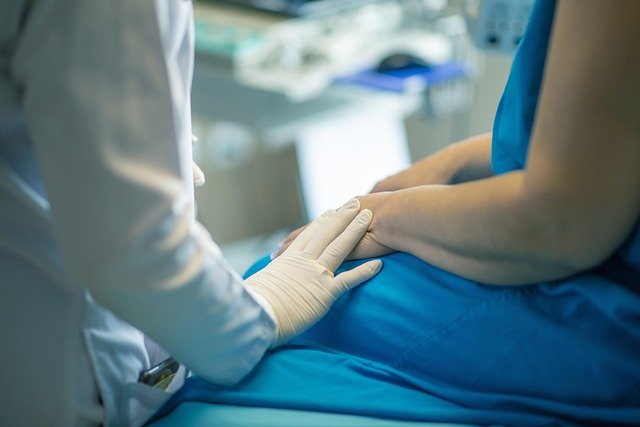Rhinoplasty: Reshaping Your Nose for Aesthetic and Functional Improvement
Rhinoplasty, commonly known as a "nose job," is a popular cosmetic procedure that can dramatically change the appearance of one's face. This surgical intervention not only enhances aesthetic appeal but can also improve breathing function for some patients. As one of the most visible features of the face, the nose plays a crucial role in overall facial harmony and balance. Rhinoplasty offers individuals the opportunity to address concerns about their nose shape, size, or function, potentially boosting self-confidence and quality of life.

Who is a Good Candidate for Rhinoplasty?
Ideal candidates for rhinoplasty are individuals who have realistic expectations about the procedure’s outcomes and are in good overall health. Patients should be at least in their mid to late teens, ensuring that facial growth is complete. Good candidates may include those with:
-
Cosmetic concerns about nose shape or size
-
Breathing difficulties due to structural issues
-
A desire to correct a deformity from injury or birth
-
Dissatisfaction with the results of a previous rhinoplasty
It’s crucial for potential patients to have a thorough consultation with a board-certified plastic surgeon to determine if they are suitable candidates for the procedure.
What Are the Different Types of Rhinoplasty Procedures?
Rhinoplasty can be tailored to address various concerns and can be categorized into several types:
-
Open Rhinoplasty: Involves making an incision across the columella (the tissue between the nostrils) for better visibility and access.
-
Closed Rhinoplasty: All incisions are made inside the nostrils, leaving no visible external scars.
-
Septoplasty: Focuses on correcting a deviated septum to improve breathing.
-
Revision Rhinoplasty: Performed to correct issues from a previous rhinoplasty.
-
Ethnic Rhinoplasty: Tailored to address specific features common in certain ethnic groups while preserving cultural identity.
Each type of rhinoplasty has its own set of advantages and considerations, which should be discussed with a qualified surgeon.
What Can You Expect During Recovery from Rhinoplasty?
Recovery from rhinoplasty is a gradual process that requires patience. Immediately after surgery, patients can expect:
-
Swelling and bruising around the nose and eyes
-
Nasal congestion and difficulty breathing through the nose
-
The need to wear a splint or cast for about a week
-
Potential discomfort managed with prescribed pain medication
Most patients can return to work or school within 1-2 weeks, but strenuous activities should be avoided for several weeks. It’s important to note that while initial swelling subsides within a few weeks, subtle changes in the nose’s appearance can continue for up to a year post-surgery.
What Are the Potential Risks and Complications of Rhinoplasty?
As with any surgical procedure, rhinoplasty carries certain risks. These may include:
-
Infection
-
Bleeding
-
Adverse reaction to anesthesia
-
Unsatisfactory aesthetic results
-
Breathing difficulties
-
Skin discoloration
-
Perforation of the nasal septum
Choosing a board-certified plastic surgeon with extensive experience in rhinoplasty can help minimize these risks. It’s crucial for patients to follow all pre- and post-operative instructions carefully to ensure the best possible outcome.
How Much Does Rhinoplasty Cost and What Factors Influence Pricing?
The cost of rhinoplasty can vary widely depending on several factors:
-
Surgeon’s experience and reputation
-
Geographic location
-
Complexity of the procedure
-
Facility fees and anesthesia costs
-
Post-operative care and follow-up visits
Here’s a general comparison of rhinoplasty costs across different regions:
| Region | Average Cost Range |
|---|---|
| United States | $5,000 - $15,000 |
| United Kingdom | £4,000 - £7,000 |
| Australia | AUD 8,000 - AUD 20,000 |
| Canada | CAD 6,000 - CAD 12,000 |
Prices, rates, or cost estimates mentioned in this article are based on the latest available information but may change over time. Independent research is advised before making financial decisions.
It’s important to note that most health insurance plans do not cover cosmetic rhinoplasty. However, if the procedure is deemed medically necessary (e.g., to correct breathing problems), insurance may cover part or all of the cost. Always check with your insurance provider and surgeon’s office for the most accurate cost information.
Rhinoplasty is a complex and highly individualized procedure that can significantly impact both appearance and function. While it offers the potential for dramatic improvement in facial harmony and self-confidence, it’s crucial to approach the decision with careful consideration and realistic expectations. Consulting with a qualified plastic surgeon is the first step in determining if rhinoplasty is the right choice for you and understanding the specific benefits and risks involved in your case.






